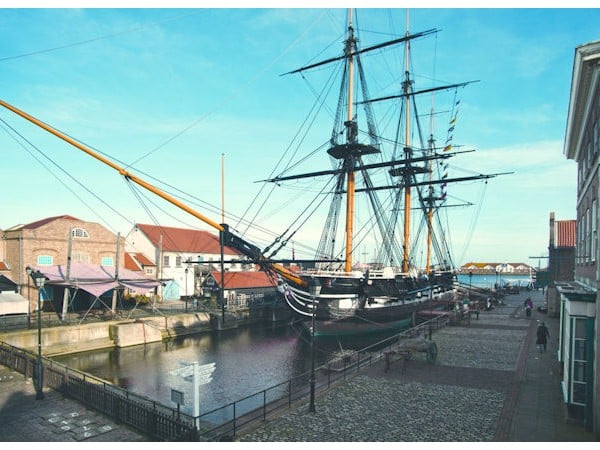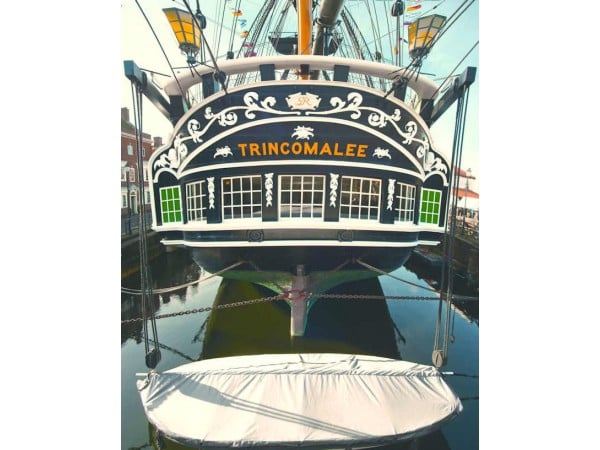
With a proud tradition stretching back almost 200 years, HMS Trincomalee is on the crest of a new learning wave, as Euan Houstoun, a descendant of a past captain, explains
It would be an enormous task to make up the story that has made HMS Trincomalee the icon of the celebrated ‘wooden walls’ of the Nelson era. The ship’s survival has been remarkable, coming back from the brink of extinction on numerous occasions. The second oldest ship afloat in the world, what has kept her hull above water for so long has been the fact that young people from across the UK continue to have the chance to learn about her proud and exciting history.
As national educational priorities change, it is essential that HMS Trincomalee changes with them. Thanks to the support of local development authorities, Freemasons and the hard work of the HMS Trincomalee Trust, the ship has been able to offer schools opportunities for learning outside the classroom in a unique and stimulating environment.
Built for the Admiralty in the East India Company dockyard at Bombay in 1817, HMS Trincomalee was constructed of Malabar teak and named after the superb natural harbour in eastern Ceylon that provided British control of the Indian Ocean from 1795. By 1862, social and technological changes gradually transformed the Royal Navy and for the next fifteen years HMS Trincomalee was to assume a drill ship role at Hartlepool, where the training of reservists afloat was seen as the key to retaining and refreshing skills. However, by 1897 the end was in sight with the ship being offered for breaking.
Out of the woodwork came Geoffrey Wheatley Cobb, a sea training enthusiast who took loan of HMS Trincomalee from the Royal Navy, and renamed her after his earlier vessel, Lord Nelson’s Foudroyant. Cobb took the ship to Falmouth and Milford Haven where young people, often from poor families, were given experience of life on board. In 1932, the ship transferred to Portsmouth and during the Second World War it was commissioned to train new entry recruits known as the ‘Bounty Boys’.
With a trust formed to promote the training and experience for young people all over the country, the ship became a beacon in the busy harbour for years, sharing water with modern-day warships. By the 1980s, however, curriculum and career changes resulted in fewer young people visiting the ship. A shortage of funds also meant that there was a severe lack of maintenance. Consequently, the structure of the ship continued to deteriorate and in 1986 the trust had to face the prospect that the ship may have made its final voyage.
Captain David Smith, chairman of the trust, came up with an alternative plan to restore the ship. After exhaustive negotiations, it was agreed that she should abandon her home in Portsmouth and move back to her former location at Hartlepool, where the regeneration and renaissance of the town could be centred on the ship. Crucially, this was also an area where there was a skilled workforce who could undertake a restoration of this magnitude. Transported by submersible barge to Hartlepool in 1987, the restoration process began in 1990 thanks largely to grants from Teesside Development Corporation and other generous supporters.
With the ship regaining its original name in Hartlepool, the restoration of HMS Trincomalee took eleven years from 1990 to 2001. The facts are staggering – the trust raised £10.5 million for the work; the process subsumed more than three quarters of a million man-hours of skilled employment; and about £8 million was fed into the local economy through wages and purchases. Not a bad achievement for a small charitable trust. Most important of all perhaps, was the outcome that more than 60 per cent of the original fabric of the ship survives today, making it one of the most important ships in the UK.
Like any survivor, HMS Trincomalee must move with the times and maintain relevance. The trust is therefore determined to upgrade the educational resources and materials for teachers and pupils across all key stages of the National Curriculum. With the support of the Freemasons, it has been able to make an exciting start to this work, and already all-new materials to stimulate writing skills at key stage 2, which covers the seven to eleven-year-old age group, have been developed.
Built for war and for a twenty-five-year life expectancy, HMS Trincomalee has already achieved a lifespan of over one hundred and ninety four years thanks to those who have nurtured her over the decades. As well as developing new educational resources, a team of educators and trustees is coordinating a broad and balanced approach to the historical relevance of HMS Trincomalee to the maritime and social history of Britain. The priority remains to create financial sustainability in order to continue the essential maintenance and conservation of HMS Trincomalee, ensuring that she is open year-round for the public’s education and enjoyment.
To find out more, go to www.hms-trincomalee.co.uk
|
Letter to the Editor – FreemasonryToday No.17 – Spring 2012 Sir, |
